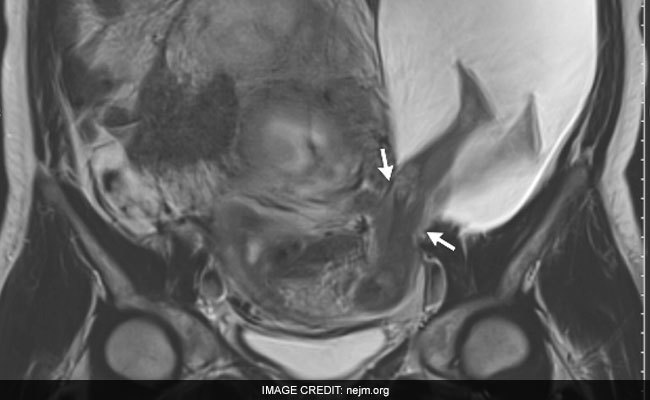
Description:
When Pierre-Emmanuel Bouet discovered that his pregnant patient had pair of legs protruding into her side from her uterus - the organ in which entire fetuses traditionally gestate before they are born - the doctor was flabbergasted. “I was astonished when I discovered the amniocele,” he wrote in an email to The Washington Post, referring to the portion of the fluid-filled sac that had ventured outside the woman’s uterus. He looked for a second opinion: “My first reaction was to ask my colleagues to confirm my diagnosis.” Bouet, an obstetrician at the University of Angers Hospital Center in western France, had good reason for astonishment. Such an anomaly was so rare, the doctor told The Post, that only 26 other recorded cases existed in the history of obstetric medicine. The woman’s doctors scanned the rupture and fetus via MRI. Bouet and a colleague published a picture of the amniocele in the New England Journal of Medicine on Thursday. Despite appearances, a savage fetal kick was not to blame. “The fetal legs did not cause the rupture,” Bouet said. Instead, the woman’s history of five C-sections likely led to a tear, in the obstetrician’s view. Due to scarring from the previous births, parts of the uterus remained atypically rigid instead of enlarging during the woman’s latest pregnancy. The uterine wall ruptured when it was unable to expand, causing an inch-long tear. The mother was unaware of the rupture and displayed no symptoms. Women with uterine ruptures usually feel pain, Bouet told The Post, brought about by internal bleeding. But the hernia “compressed the walls of the uterine rupture,” he said, “and acted as a hemostatic effect.” That is, the position of the amniocele and baby legs plugged the rupture, preventing blood loss. Still, the danger that the amniocele posed to the pregnant woman concerned Bouet. Her entire uterus could rupture, leading to internal bleeding. There was a severe risk of preterm birth. “Given high maternal and fetal risk, I suggested to the couple an early medical termination of pregnancy at 22 weeks of gestation,” the doctor said. The couple, however, opted to proceed. Eight weeks later, their child was born, delivered via C-section. “The newborn was born healthy,” Bouet said. “He was premature, but healthy.” Six months later, the doctors reported, the infant was alive and kicking.